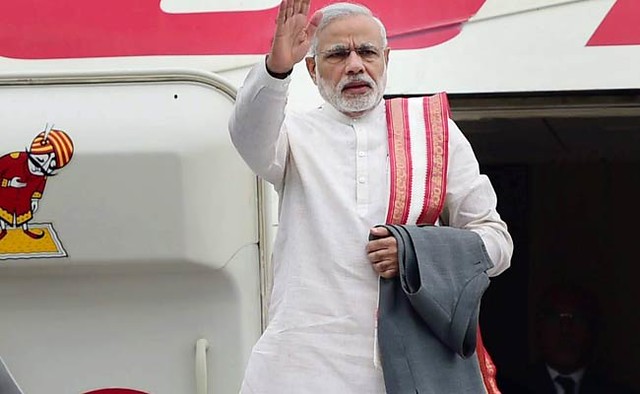Prime Minister Narendra Modi’s ambitious target of achieving ₹9 lakh crore ($120 billion) in textile exports by 2030 aims to transform India into a global textile powerhouse, leveraging the sector’s employment potential and traditional strengths. Here’s a comprehensive analysis of the vision, strategies, and hurdles:
Current Status and Growth Imperative
Current Exports:
- India’s textile exports hover around $35–40 billion annually (~₹3 lakh crore), contributing 11% to total exports and employing 45 million people directly.
Global Position:
- India is the 6th-largest textile exporter (3.5% global share), lagging behind China (40%), the EU, and Bangladesh.
2030 Target:
- Tripling exports to ₹9 lakh crore requires a 15–20% CAGR growth, demanding structural reforms and global competitiveness.
Key Strategies to Achieve the Target
Production-Linked Incentive (PLI) Scheme:
- ₹10,683 crore PLI for man-made fiber (MMF) and technical textiles aims to reduce import dependency and boost high-value products.
- Incentives for incremental production and job creation in apparel, fabrics, and technical textiles.
Mega Textile Parks (PM MITRA):
- 7 integrated parks (₹4,445 crore outlay) will offer plug-and-play infrastructure, reducing logistics costs and fostering economies of scale.
Focus on Technical Textiles:
- Targeting a $10 billion export market by 2030 in high-growth segments (e.g., medical, geotextiles, agrotextiles).
Skill Development:
- SAMARTH Scheme to train 400,000 workers, addressing skill gaps in design, digital manufacturing, and sustainability.
Sustainability Push:
- Promoting organic cotton, eco-friendly dyes, and circular economy practices to align with global ESG norms (e.g., EU’s Green Deal).
Brand India Campaigns:
- Initiatives like #VocalForLocal and “Farm to Foreign” to market Indian handloom, khadi, and craftsmanship globally.
Trade Agreements:
- Negotiating FTAs with the EU, UK, and Canada to reduce tariffs and counter Bangladesh/Vietnam’s duty-free access.
Opportunities
China+1 Diversification:
- Global buyers seeking alternatives to China amid geopolitical tensions and supply chain disruptions.
Domestic Demand:
- Rising middle-class consumption (apparel, home textiles) supports scale and export competitiveness.
Technical Textiles:
- A $250 billion global market with India’s potential to lead in cost-effective, innovation-driven products.
E-commerce and D2C:
- Digital platforms enabling MSMEs to access global markets directly.
Challenges
Structural Bottlenecks:
- Fragmented MSMEs, outdated machinery, and low productivity (e.g., India’s spinning sector operates at 65% capacity).
- High logistics costs (14% of GDP vs. 8% in China) due to poor infrastructure.
Global Competition:
- Bangladesh (lower labor costs) and Vietnam (free-trade access) dominate apparel exports.
- Rising protectionism (e.g., EU’s carbon border tax) and compliance costs.
Raw Material Dependency:
- Reliance on imported synthetic fibers (polyester, viscose) due to weak MMF capacity.
Policy Execution:
- Past failures (e.g., 2016 GST disruptions, delayed MITRA parks) raise skepticism about implementation.
Critical Success Factors
Tech Adoption:
- AI, IoT, and automation to enhance productivity.
Cluster Development:
- Strengthening textile hubs (Tiruppur, Surat, Ludhiana).
Credit Access:
- Affordable financing for MSMEs via schemes like TUFS.
Sustainability Certifications:
- Meeting global standards (e.g., GOTS, OEKO-TEX).
FOLLOW:https://newsroom47.com/stock-market-opens-weak-auto-realty-and-it-shares-see-losses/
Newsroom 47
